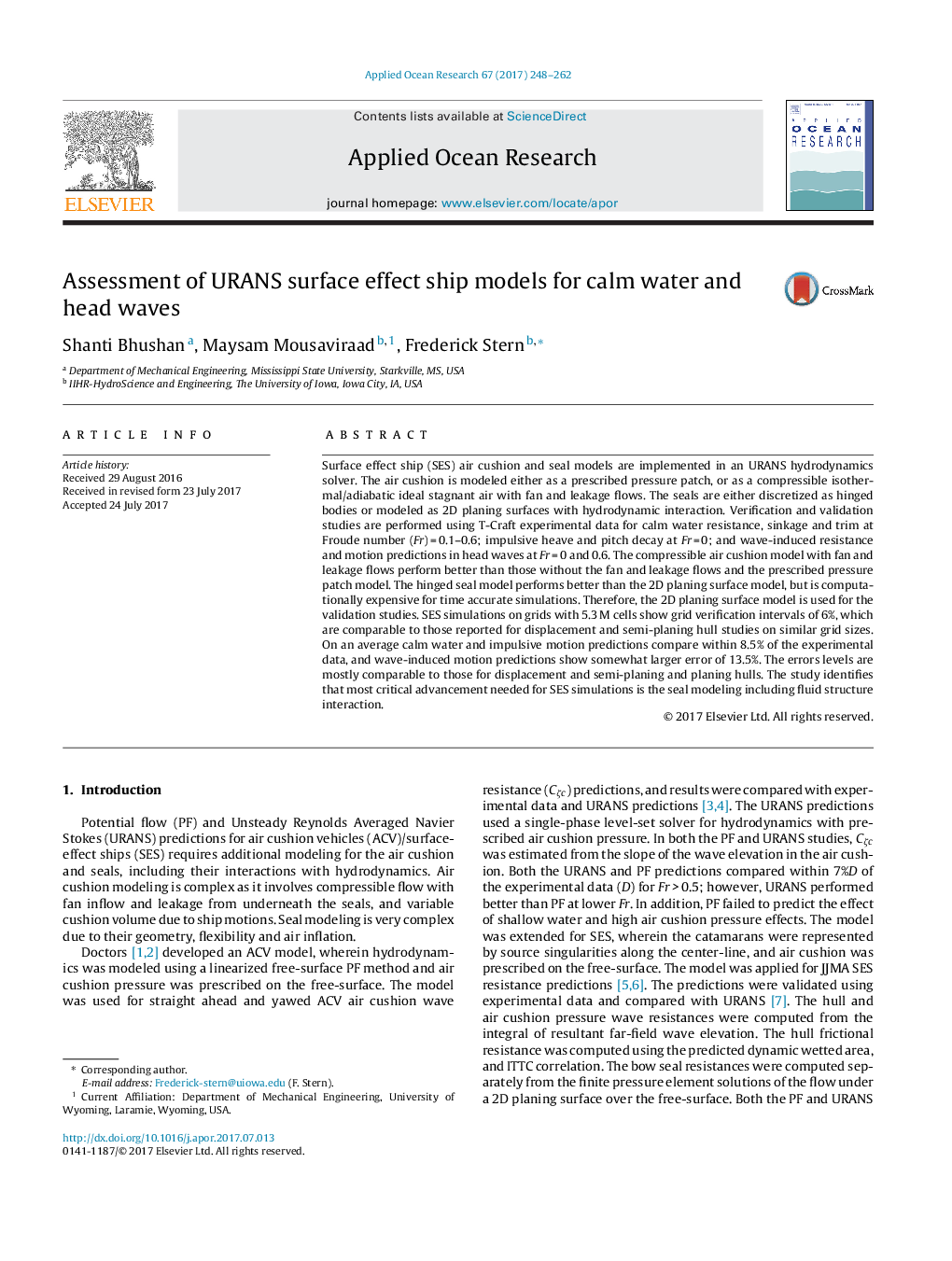| Article ID | Journal | Published Year | Pages | File Type |
|---|---|---|---|---|
| 5473284 | Applied Ocean Research | 2017 | 15 Pages |
Abstract
Surface effect ship (SES) air cushion and seal models are implemented in an URANS hydrodynamics solver. The air cushion is modeled either as a prescribed pressure patch, or as a compressible isothermal/adiabatic ideal stagnant air with fan and leakage flows. The seals are either discretized as hinged bodies or modeled as 2D planing surfaces with hydrodynamic interaction. Verification and validation studies are performed using T-Craft experimental data for calm water resistance, sinkage and trim at Froude number (Fr) = 0.1-0.6; impulsive heave and pitch decay at Fr = 0; and wave-induced resistance and motion predictions in head waves at Fr = 0 and 0.6. The compressible air cushion model with fan and leakage flows perform better than those without the fan and leakage flows and the prescribed pressure patch model. The hinged seal model performs better than the 2D planing surface model, but is computationally expensive for time accurate simulations. Therefore, the 2D planing surface model is used for the validation studies. SES simulations on grids with 5.3 M cells show grid verification intervals of 6%, which are comparable to those reported for displacement and semi-planing hull studies on similar grid sizes. On an average calm water and impulsive motion predictions compare within 8.5% of the experimental data, and wave-induced motion predictions show somewhat larger error of 13.5%. The errors levels are mostly comparable to those for displacement and semi-planing and planing hulls. The study identifies that most critical advancement needed for SES simulations is the seal modeling including fluid structure interaction.
Related Topics
Physical Sciences and Engineering
Engineering
Ocean Engineering
Authors
Shanti Bhushan, Maysam Mousaviraad, Frederick Stern,
